Architectural trends come and go, but some once-stylish design choices are now making homes look dated faster than ever. Features that were once seen as innovative or luxurious can quickly become impractical, difficult to maintain, or simply fall out of favor. Buyers today prioritize clean lines, open spaces, and timeless materials, making some older trends feel out of place. If you’re thinking about updating your home or planning a renovation, it may be time to reconsider these once-popular architectural statements.
1. Oversized Arched Windows
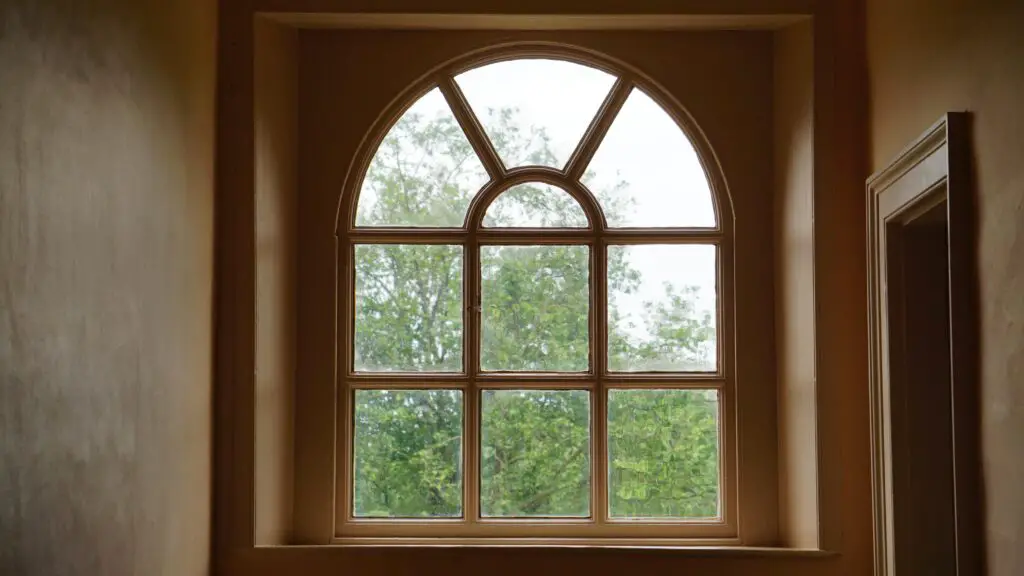
Once considered a luxurious design feature, oversized arched windows are now making homes feel dated. According to Architectural Digest, these dramatic windows were a staple of grand homes in the 1980s and 1990s, but they pose challenges for modern homeowners. Their distinctive shape limits window treatment options, making privacy and light control difficult. Additionally, their outdated aesthetic can clash with contemporary minimalist trends, leading many buyers to see them as a renovation burden rather than an asset.
While arched windows can still look elegant in certain architectural styles, they often feel out of place in newer, streamlined homes. Homeowners looking to modernize their spaces are replacing them with larger, squared-off panes for a cleaner look. Updating these windows typically requires significant investment, as reshaping structural elements isn’t a simple fix. As a result, many real estate agents note that homes with prominent arched windows may struggle to attract younger buyers looking for a fresh, modern aesthetic.
2. Tuscan-Style Kitchen Details
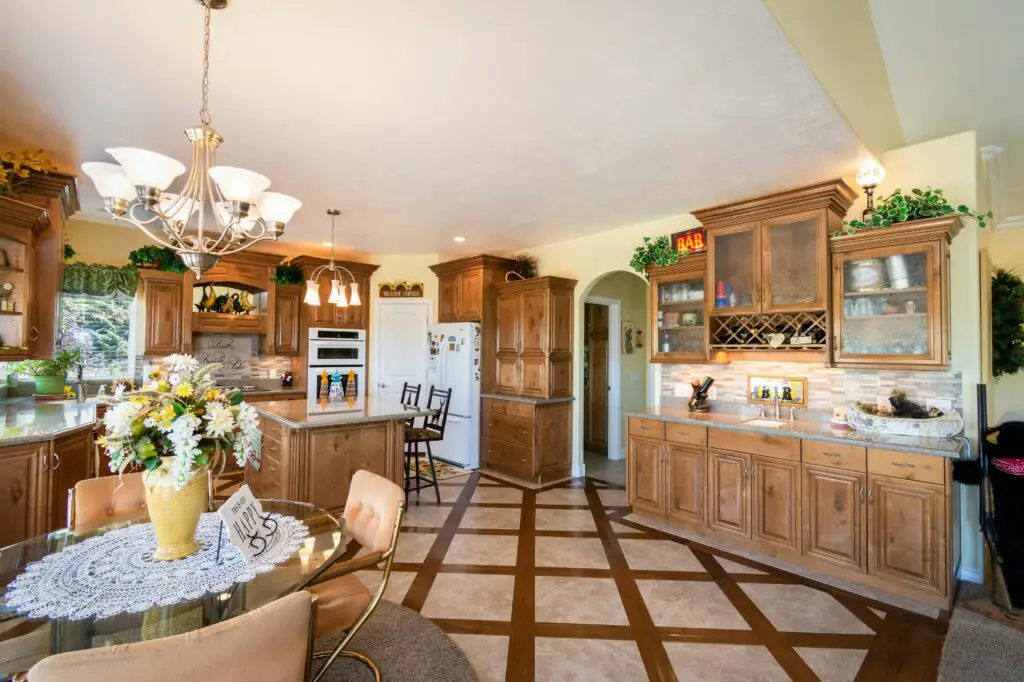
Tuscan-inspired kitchens were the height of luxury in the early 2000s, with their ornate cabinetry, dark wood finishes, and heavy stone countertops. The Spruce notes that this Mediterranean aesthetic, once associated with high-end homes, now feels excessive compared to the light, airy styles preferred today. The deep, rich colors and textured finishes tend to make spaces feel smaller and darker, which goes against the current demand for bright, open kitchens. As a result, many homeowners are painting over faux-distressed cabinets and swapping out heavy granite for sleek quartz.
While some elements of Tuscan design—like warm, earthy tones—are making a subtle comeback, the overall look feels outdated to most buyers. Ornate corbels, travertine backsplashes, and wrought-iron accents are often removed in favor of simpler, modern finishes. The trend toward minimalist, Scandinavian-inspired kitchens has made Tuscan details feel overly decorative. As a result, homes with these features may require updates to appeal to contemporary tastes.
3. Glass Block Walls
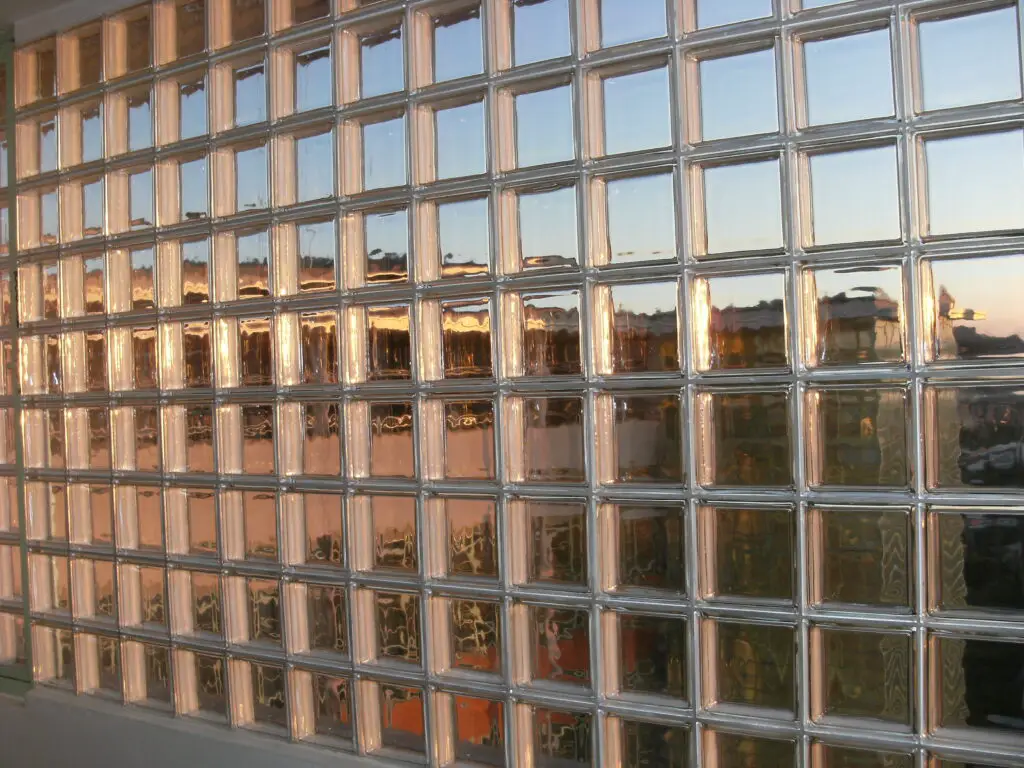
Glass block walls were once a futuristic design choice, frequently used to bring light into bathrooms and hallways while maintaining privacy. However, according to House Beautiful, this once-trendy feature now screams “1980s” and is often removed in favor of more modern materials. These bulky, translucent walls tend to yellow over time, making spaces look dated rather than sleek and contemporary. Additionally, their chunky appearance disrupts the clean lines that many homeowners now prefer.
Replacing glass block walls isn’t always simple, as they are often built into a home’s structure. Many homeowners opt to swap them for frosted glass panels or larger windows to create a more seamless aesthetic. While some mid-century designs can still incorporate them effectively, most modern renovations aim to eliminate these relics of the past. Buyers looking for an updated home may see glass block walls as an immediate renovation project.
4. Sunken Living Rooms
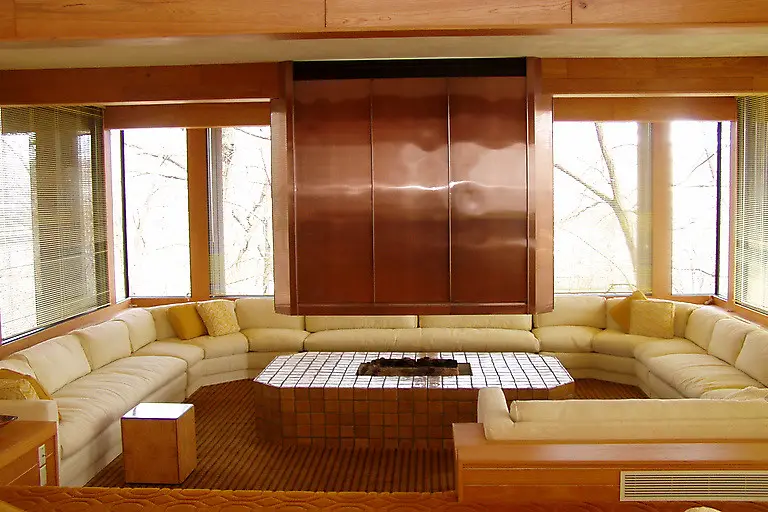
Sunken living rooms were once a sign of high-end, custom home design, adding a sense of drama and separation to open spaces. The New York Times explains that this design choice, popular in the 1960s and 1970s, has become impractical for today’s lifestyles. The step-down layout can be a tripping hazard, making homes less accessible, particularly for older homeowners or families with small children. Additionally, these spaces can feel disconnected from the rest of the home, making furniture placement more challenging.
Many homeowners are opting to level out sunken rooms to create a seamless, functional living area. The cost of this renovation can be high, especially if structural adjustments are needed, but it significantly improves the flow of a home. While some vintage-style homes embrace the feature, most buyers see it as an inconvenience rather than a stylish addition. As a result, homes with sunken living rooms may require updates to remain competitive in the market.
5. Built-In Entertainment Centers

Built-in entertainment centers were once a must-have feature, designed to house bulky televisions and media collections. However, with the rise of flat-screen TVs and streaming services, these oversized cabinetry units are now seen as unnecessary and outdated. Their deep shelves and intricate molding often take up too much space, making living rooms feel cluttered and inflexible. Modern homeowners prefer sleek, wall-mounted TVs and minimalist media consoles instead.
Removing built-in entertainment centers can be a costly and time-consuming project, particularly if they are integrated into the home’s structure. Some homeowners attempt to repurpose them as bookshelves or storage units, but their original purpose is often too obvious to disguise. As trends shift toward open-concept living, these bulky installations are increasingly being torn out. Homes with prominent built-ins may struggle to attract buyers who prioritize flexibility and modern design.
6. Decorative Columns in Open Floor Plans
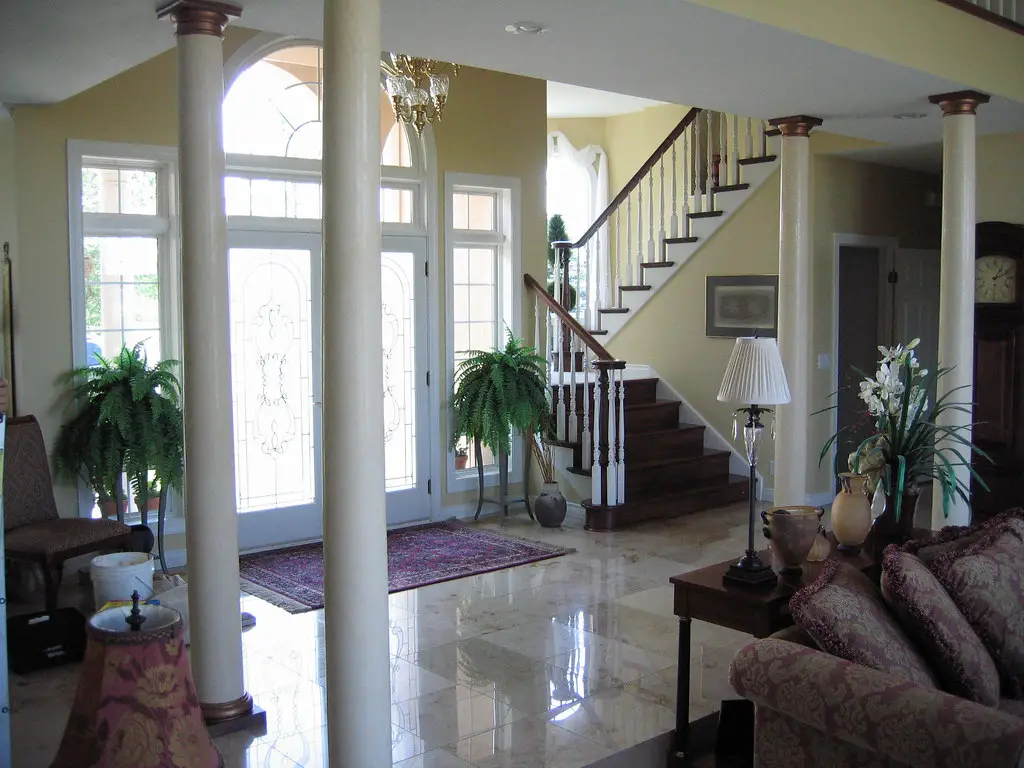
Decorative columns were once used to define spaces in open floor plans, creating a sense of grandeur and structure. However, in many homes, these columns now feel like unnecessary obstacles that interrupt flow rather than enhance it. As modern design favors wide, unobstructed spaces, these structural elements often seem clunky and outdated. Many homeowners are choosing to remove them to create a more seamless, airy feel.
While some classic architectural styles still incorporate columns effectively, they often look out of place in contemporary settings. Their removal, however, can be expensive if they serve a load-bearing function, requiring careful planning. For those who want a more modern aesthetic without major renovations, painting columns to match the walls or simplifying their design can help them blend in. Still, many buyers see decorative columns as a feature that dates a home rather than elevates it.
7. Textured Ceilings
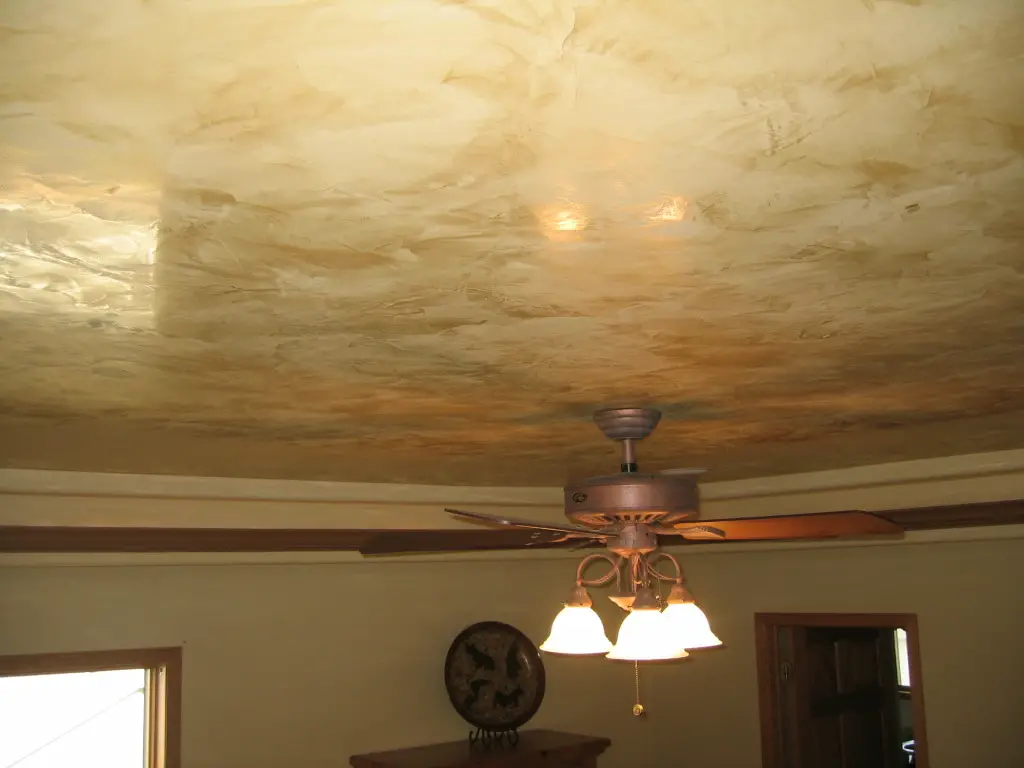
Popcorn and other textured ceilings were once a go-to way to add visual interest and hide imperfections. Today, they are widely considered an outdated design choice that makes spaces look older. Their rough surfaces tend to collect dust and cobwebs, making them harder to clean than smooth ceilings. Additionally, many homeowners worry about the presence of asbestos in older popcorn ceilings, leading them to invest in costly removals.
Smoothing out textured ceilings is a labor-intensive process that often requires professional assistance. However, removing them can dramatically modernize a space and make it feel fresher and brighter. Some homeowners attempt to disguise these ceilings with new lighting or paint, but the texture remains noticeable. In today’s market, a home with textured ceilings may feel stuck in the past unless updates are made.
8. Faux Stone or Brick Accents
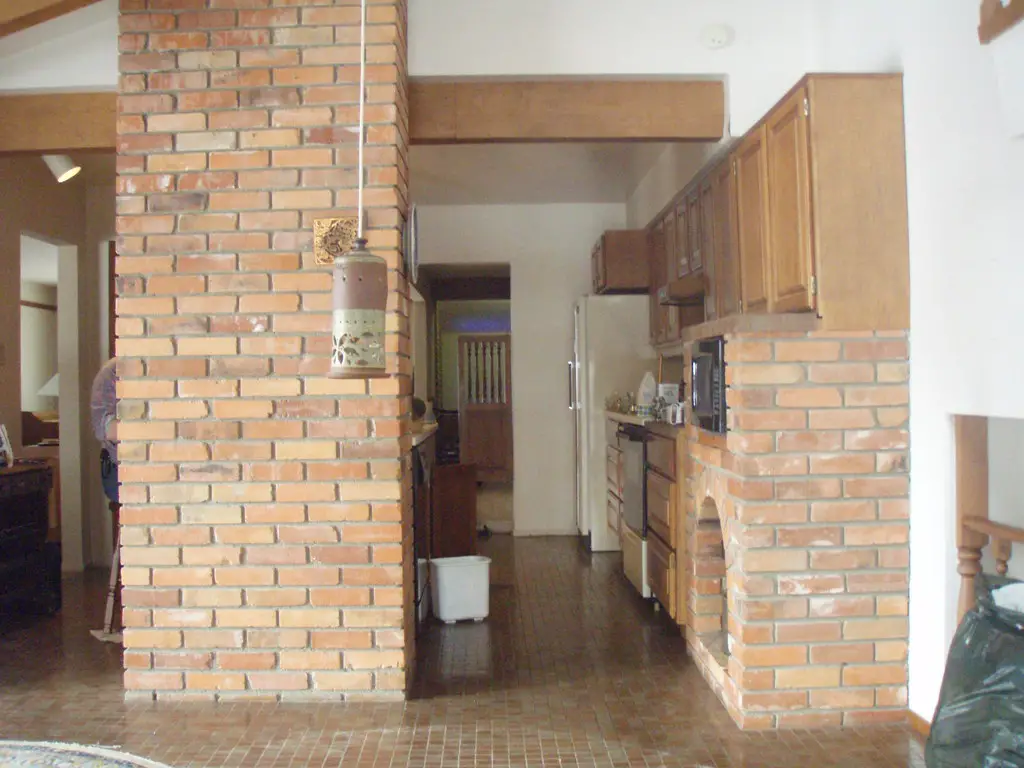
Faux stone and brick were once a popular way to add rustic charm without the cost of real masonry. However, these materials often look artificial up close and can quickly become outdated. Over time, they may crack, fade, or separate from the walls, making them more of an eyesore than a feature. Many homeowners are now opting for real, high-quality materials or clean, painted walls instead.
While faux finishes were once seen as a budget-friendly upgrade, they are now often removed to restore a more authentic look. The trend toward natural materials means that buyers can easily spot imitation stone or brick, and they often see it as a design flaw rather than an enhancement. Replacing these accents can be expensive, but it significantly improves a home’s resale appeal. Homeowners looking to modernize their spaces are increasingly steering clear of these once-popular design choices.
9. Raised Entryways
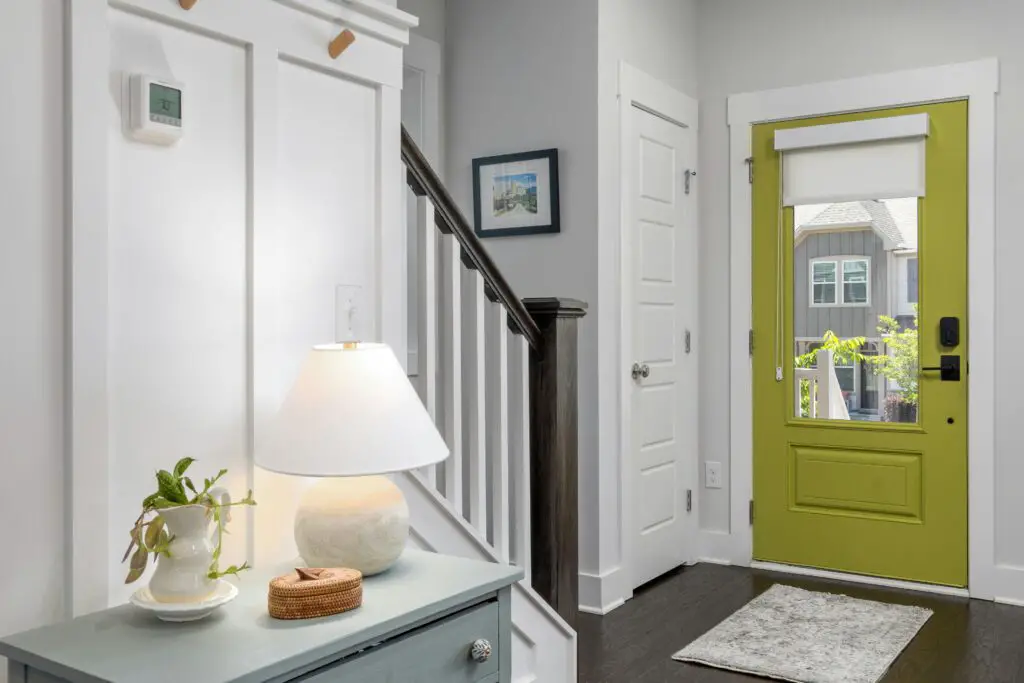
Raised entryways were originally designed to add drama to a home’s entrance, creating a grand first impression. However, they can pose practical challenges, especially for accessibility. Steps leading up to the front door can make homes less welcoming for older adults, families with young children, and anyone with mobility issues. Additionally, these elevated designs often require more maintenance, as steps and landings are prone to wear from weather exposure.
Many modern homes now favor level entryways that provide a smoother transition from the exterior to the interior. Not only do they improve accessibility, but they also create a more seamless, contemporary look. Removing or lowering a raised entryway can be costly, but it significantly enhances a home’s curb appeal and functionality. As homebuyers prioritize convenience and inclusivity, raised entryways are increasingly seen as a drawback rather than a desirable feature.
10. Overly Tall Ceilings in Small Rooms
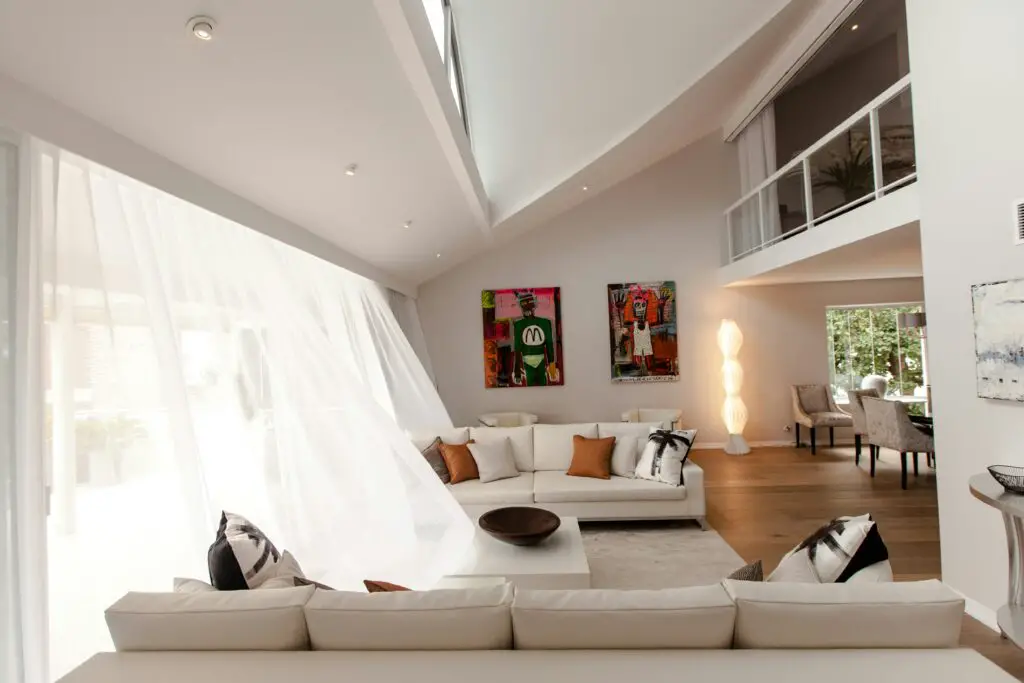
High ceilings can make a space feel grand and open, but when paired with a small floor plan, they can create an awkward and unbalanced look. Instead of adding to the sense of spaciousness, overly tall ceilings in compact rooms can make furniture placement difficult and leave walls feeling empty. They also make heating and cooling less efficient, leading to higher energy costs and uneven temperature distribution throughout the home. Homeowners may find themselves struggling to decorate these spaces in a way that feels cohesive and inviting.
While high ceilings work well in large, open areas, they often feel impractical in smaller rooms. Many homeowners opt to add design elements like statement lighting, beams, or dropped ceilings to bring the proportions back into balance. However, these fixes can be expensive, and some buyers may prefer homes with a more naturally harmonious layout. As a result, homes with awkwardly tall ceilings in small rooms may require thoughtful redesigns to appeal to modern tastes.
11. Angled Kitchen Islands
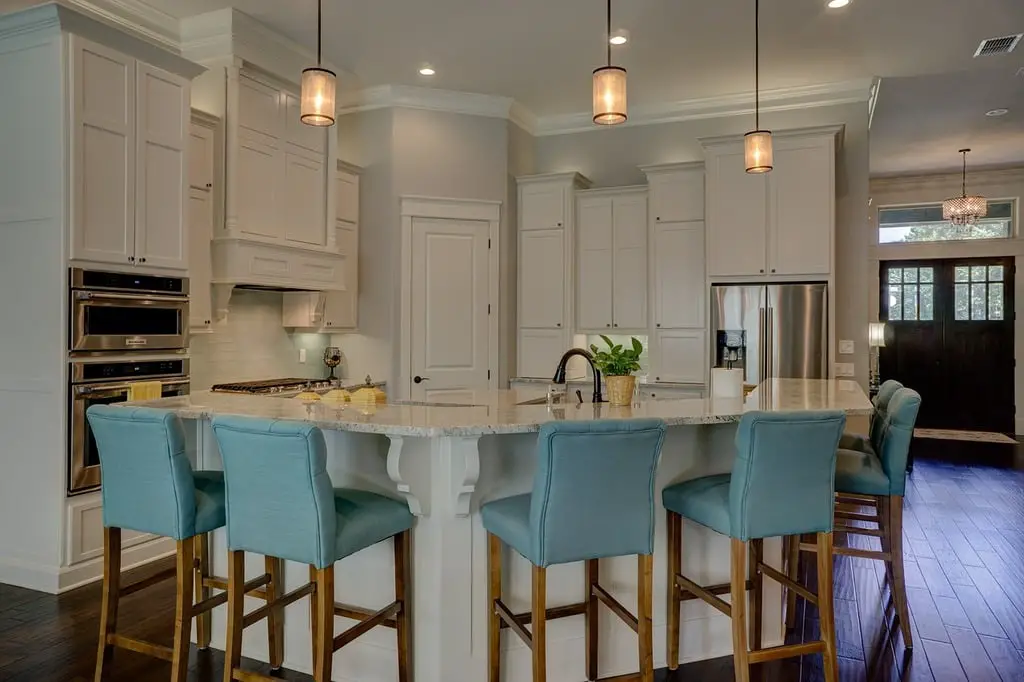
Angled kitchen islands were once a creative way to maximize counter space and create a unique focal point in the kitchen. However, their irregular shape often leads to inefficient layouts, making it difficult to optimize workflow. Instead of offering a smooth, streamlined workspace, angled islands can disrupt the natural flow between cooking, prep, and dining areas. They also tend to take up more space than necessary, leaving kitchens feeling cramped rather than open.
Many homeowners now prefer rectangular or waterfall-style islands that provide clean lines and better functionality. Removing an angled island and replacing it with a more modern shape can significantly improve a kitchen’s usability. However, because these islands are often custom-built, changing them can be expensive and require extensive renovations. As open-concept kitchens remain popular, the preference for simple, space-efficient islands continues to grow.
12. Elaborate Staircase Designs
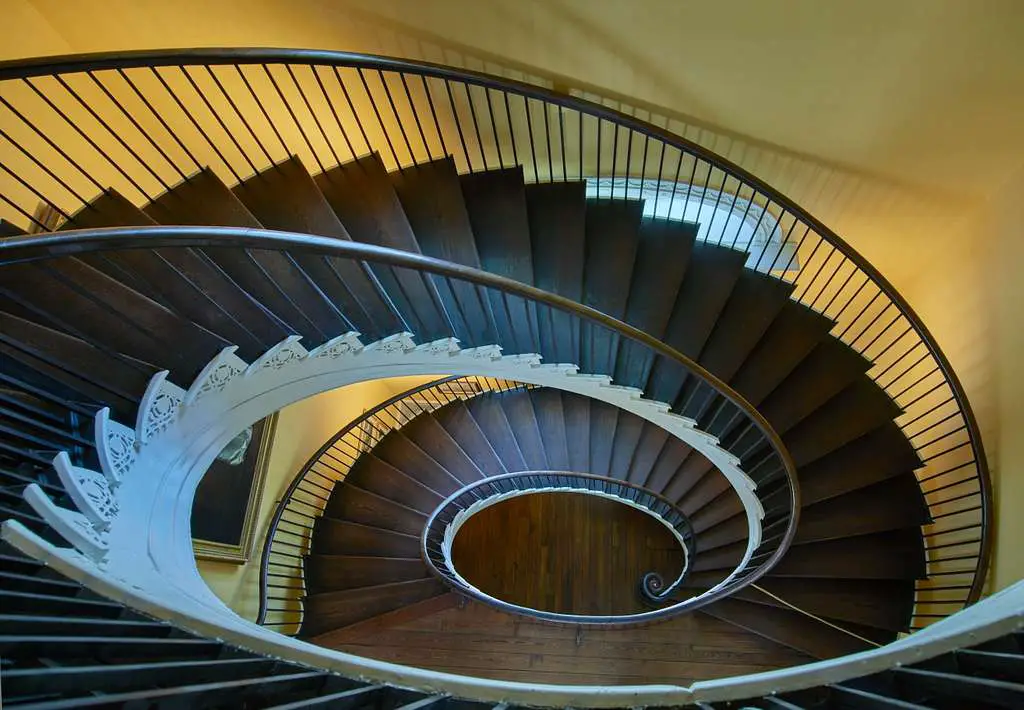
Grand staircases with intricate railings, sweeping curves, or dramatic landings were once a way to showcase luxury and craftsmanship. However, in many modern homes, these elaborate designs feel excessive and out of sync with contemporary aesthetics. Their ornate details can make them harder to clean and maintain, and they often take up valuable square footage that could be better utilized. In smaller homes, these staircases can overwhelm the space rather than enhance it.
Today’s homeowners tend to prefer sleek, minimalist staircases with clean lines and open risers. Simple wood or metal railings are replacing heavy balusters, while floating staircases add a modern, airy feel. While traditional staircases can still work in certain architectural styles, overly elaborate designs are increasingly being removed or simplified. For those looking to modernize their home, a streamlined staircase can make a significant difference in both style and functionality.
